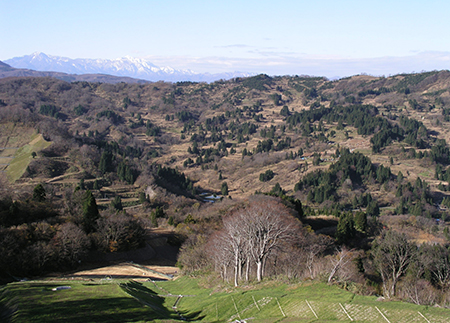Source: Geophysical Research Letters
Not all landslides happen suddenly, and even a slow-moving landslide can still cause severe damage to roads and buildings in its path. Understanding the trigger mechanisms in areas prone to slow-moving landslides can help communities anticipate when these events could occur and prevent death or property damage. New research shows that cold temperatures—without rain or snow melt—may play an important role in triggering landslides.
Previous studies have shown that slow-moving landslides occur on clayey slopes all over the world, activated during periods of intense rainfall or melting snow. That is because increasing the groundwater pressure in the soil will reduce the stress resistance of the soil, causing it to turn into a landslide.

However, in northwest Japan, landslides frequently occur on gentle slopes during the cold season, from late autumn until the snow-melting period in the spring—unprompted by either rain or melting snow.
Here Shibasaki et al. investigated the Busuno-Touge landslide in northwest Japan—which contains high abundances of smectite clay—and found that decreasing ground temperature plays a key role in triggering shallow, slow-moving landslides early in the cold season.
The researchers performed experiments on soils found in the Busuno-Touge landslide to study the shear strength of the slip surface, or the strength needed to withstand slipping forces applied along a specific sliding plane within the soil. As the scientists lowered the temperature of the soil samples, the shear strength decreased with the temperature.
Not only is the soil in this region more vulnerable to landslides during the cold seasons, but the high amount of snowfall each winter means that there is even more stress exerted on these slopes, making them more unstable in some cases. This new insight on the effect of temperature change on clayey slopes could bring researchers closer to predicting landslides. (Geophysical Research Letters, doi:10.1002/2016GL069604, 2016)
—Alexandra Branscombe, Freelance Writer
Citation:
Branscombe, A. (2016), Cold temperatures set off slow-moving landslides, Eos, 97, https://doi.org/10.1029/2016EO057113. Published on 08 August 2016.
Text © 2016. The authors. CC BY-NC-ND 3.0
Except where otherwise noted, images are subject to copyright. Any reuse without express permission from the copyright owner is prohibited.

